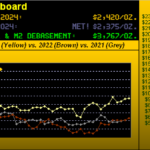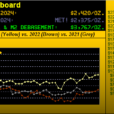

As the Redfin (RDFN: $13/share) IPO approaches, investors must decide whether the firm is a traditional real estate brokerage or a technological innovator likely to disrupt the traditional real estate brokerage market. RDFN currently looks like a traditional brokerage and generates roughly 90% of its revenue from traditional commissions. The company’s ultimate mission is to revolutionize the way American’s buy and sell their home by leveraging technology to lower costs and provide a smoother, faster real estate transaction process.
Will the tech focus be enough to set RDFN apart in the fragmented residential brokerage market? Can RDFN become to the residential brokerage market what Amazon is to retail? While we are far from convinced, there may be enough market participants that will answer “yes” to keep this IPO from coming out of the gate like Snapchat (SNAP) or Blue Apron (APRN). However, investors considering jumping in should exercise caution, and realize that the traditional brokerage vs. tech company question is already being answered by the IPO valuation.
For the company to succeed longer term, it needs a tech company valuation to access the capital required to fund its current cash burn and future investments. Further, the road to taking the market share necessary to justify today’s valuation is likely a long one. In light of its optimistic valuation and the downside risk associated with the business ultimately being viewed as a traditional real estate brokerage with fancy apps, the upcoming Redfin (RDFN) IPO is in the Danger Zone this week.
Investments in Technology to Drive Additional Losses
Per Figure 1, Redfin’s revenue grew an impressive 43% year-over-year in 2016. Meanwhile, net operating profit after-tax (NOPAT) slightly improved from -$28 million in 2015 to -$21 million in 2016. Despite the narrower loss in 2016, RDFN is not likely on a path to profitability in the foreseeable future. In fact, we would not be surprised to see losses widening following the IPO as the fresh cash is used to fund investments in the company’s real estate technology platform.
Figure 1: Redfin’s Profitless Revenue Growth

Sources: New Constructs, LLC, and company filings
Redfin has a NOPAT margin of -8% and earns a bottom-quintile return on invested capital (ROIC) of -17%. The company burned through $57 million in free cash flow (FCF) in 2016. Not surprisingly, the upcoming IPO comes at a time when Redfin most needs cash to keep the business running. The company’s $66 million in cash currently on the books would only support the 2016 cash burn rate for just over one year. The IPO proceeds will position the company to invest heavily for the next 3-4 years.
On a GAAP basis, RDFN’s profitability looks no better. Redfin’s GAAP net loss of -$28 million in 1Q17 was greater than its GAAP net loss for all of 2016. As Redfin expands into the mortgage and title businesses, the company’s losses have increased.
Losses could get worse before they get better. However, RDFN could prove to be another company where losses are forgiven by the market so long as the company maintains its revenue growth trajectory.
Limited Exec Comp Disclosure Raises Red Flags
As an “emerging growth company,” Redfin faces less strict reporting standards (more on these issues below), particularly in regards to executive compensation. However, information the company does provide suggests that Redfin’s executive compensation plan fails to properly align executive interests’with shareholders’ interests’.
Apart from base salaries, executives are eligible for non-equity performance compensation. The metrics used to determine these bonuses include revenue, year-over-year revenue targets, customer satisfaction, the number of monthly average visitors to Redfin’s site, and gross margin in certain markets. Equity awards were given at the discretion of the board of directors. Unfortunately, none of these metrics properly incentive executives and could lead to large bonuses while shareholder value is destroyed.
We’ve demonstrated through numerous case studies that ROIC is the primary driver of shareholder value creation. Without changes to this compensation plan (e.g. emphasizing ROIC), investors remain exposed to the potential for executives to enrich themselves while destroying shareholder value.
Unique Non-GAAP Metrics Raise More Red Flags
Redfin forgoes the use of common non-GAAP metrics such as adjusted EBITDA or non-GAAP net income, which often mask the true economics of the business. However, Redfin’s non-GAAP metrics direct investor attention even farther away from the economics of the business than common non-GAAP metrics. The fact that management uses Redfin’s “Key Business Metrics” to evaluate the business, develop financial forecasts, and make strategic decisions means the people running the business may have no regard for the economics of the business. Redfin’s “Key business metrics” include:
The focus on the top-line, and omission of the bottom line is the largest flaw in each of these metrics. Redfin can tout “record performance” in real estate transactions, but if the cost of completing a sale rises just as fast, the firm’s profitability will continue to lag.
Competition From Brokerages & Tech Firms Makes RDFN Gamble a Risky One
RDFN management is positioning the company as a better version of Zillow with transactional capabilities rather than a traditional brokerage such as Realogy (RLGY). While RDFN falls somewhere between the two, it’s clear that the firm represents one of an estimated 86,000 real estate brokerages in the United States. Residential brokerage is a highly-fragmented industry with low barriers to entry, which makes RDFN’s large bet on the industry a risky one.















